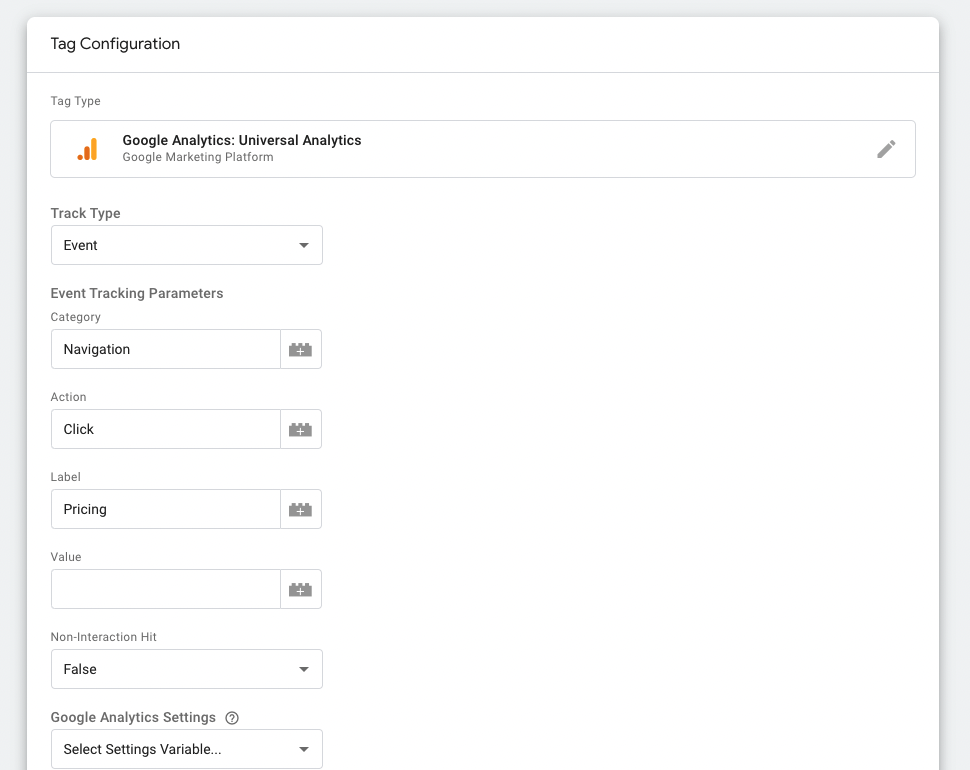6 Simple Techniques For Google Analytics Event Tracking
Table of ContentsMore About Google Analytics Event TrackingThe Definitive Guide for Google Analytics Event TrackingThe Facts About Google Analytics Event Tracking RevealedNot known Facts About Google Analytics Event TrackingThe 4-Minute Rule for Google Analytics Event TrackingGet This Report on Google Analytics Event Tracking

If you're mosting likely to establish occasion tracking by hand, then you're mosting likely to have to include some additional code to the components you wish to gather data from. The code you're mosting likely to deal with will certainly look something such as this: There are four elements within that code bit that you're mosting likely to need to specify yourself: event, Classification, event, Action, occasion, Tag and occasion, Value.
As you can see, 2 of these are needed (classification and action) while label and worth are optional. Everything depends on the kind of details you want communicated back to Google Analytics when a customer clicks the defined aspect (Google Analytics Event Tracking). It will certainly be a lot easier to define these elements if you analyse your web site and determine which elements/actions you wish to track
Facts About Google Analytics Event Tracking Uncovered
Currently, you'll be asked to specify the and and you'll want to choose from the drop-down menu that shows up when you click. This will certainly raise the exact same occasion monitoring parts we looked at earlier, which you'll need to complete. Once you've defined these, you can move down to the second box and choose the trigger that will terminate your tag.
On the following display, you'll also have a field for calling your trigger and, if you click package, you'll see a checklist of the different triggers you can select. In this situation, we intend to select and then choose the choice below. Then you'll set the trigger to only discharge when an aspect is clicked with a link that includes the.
Basic - Occasion tracking! Occasion tracking provides you a photo of exactly how customers engage with your internet site and organization. Review on as we discover whatever you need to know, including what it is, why you must track events, exactly how to manage events information, and various other pertinent Frequently asked questions you may have.
The Best Guide To Google Analytics Event Tracking
You can switch between your event classifications, actions, and labels in the Top Events report. This record is critical for excavating further into research on a particular occasion classification. The Event Pages record presents the web pages where occasions are caused. In this section, we can analyze the top pages that drive occasions.
Events in Google Analytics have four major elements. Google Analytics utilizes these codes to track user interactions and team them into occasion records (Google Analytics Event Tracking).
A checklist of the specifications you can track on your website is on the. After examining all necessary fields, you check over here can click "X" to close the home window and return to the Summary menu on the.
The Best Guide To Google Analytics Event Tracking

If you haven't done so, you may require to establish up a variable in the Google Analytics Setups box. After this, enter your GA monitoring ID in the Monitoring ID area.
Your ID will be on top of the display. To do this, comply with the next series of actions: After configuring the fields, choose the "Triggering" area. When configuring your new trigger, click the "+" button, then the "pencil" switch, after that choose your trigger type. Label your trigger and define the conditions that cause trigger firing.
10 Simple Techniques For Google Analytics Event Tracking

When it familiarizes which areas and components are assisting clients through your conversion channel, you still will not know. Without occasion tracking, GA records will only count visits as single-page sessions, also if users spend a lot of time on one web page and engage with it substantially (and a bounce).
Just how does event monitoring accomplish this?Single-web page sessions understood as bounces start and conclude on the very same web page. Without event tracking, GA will classify a user's check out you could look here as a bounce if they do not navigate to another page, no matter exactly how they connect with it. A video-rich web page can have a greater bounce price if occasions are not tracked.
Google Analytics Event Tracking for Beginners
Nevertheless, for GA to take occasion hits into account when gauging bounce rates, you must pick "Non-interaction event" as "False" during the GTM setup. Establishing "event objectives" with event action is an outstanding means to maintain track of user tasks you worth extremely, such as new lead entries or click a phone call to action.